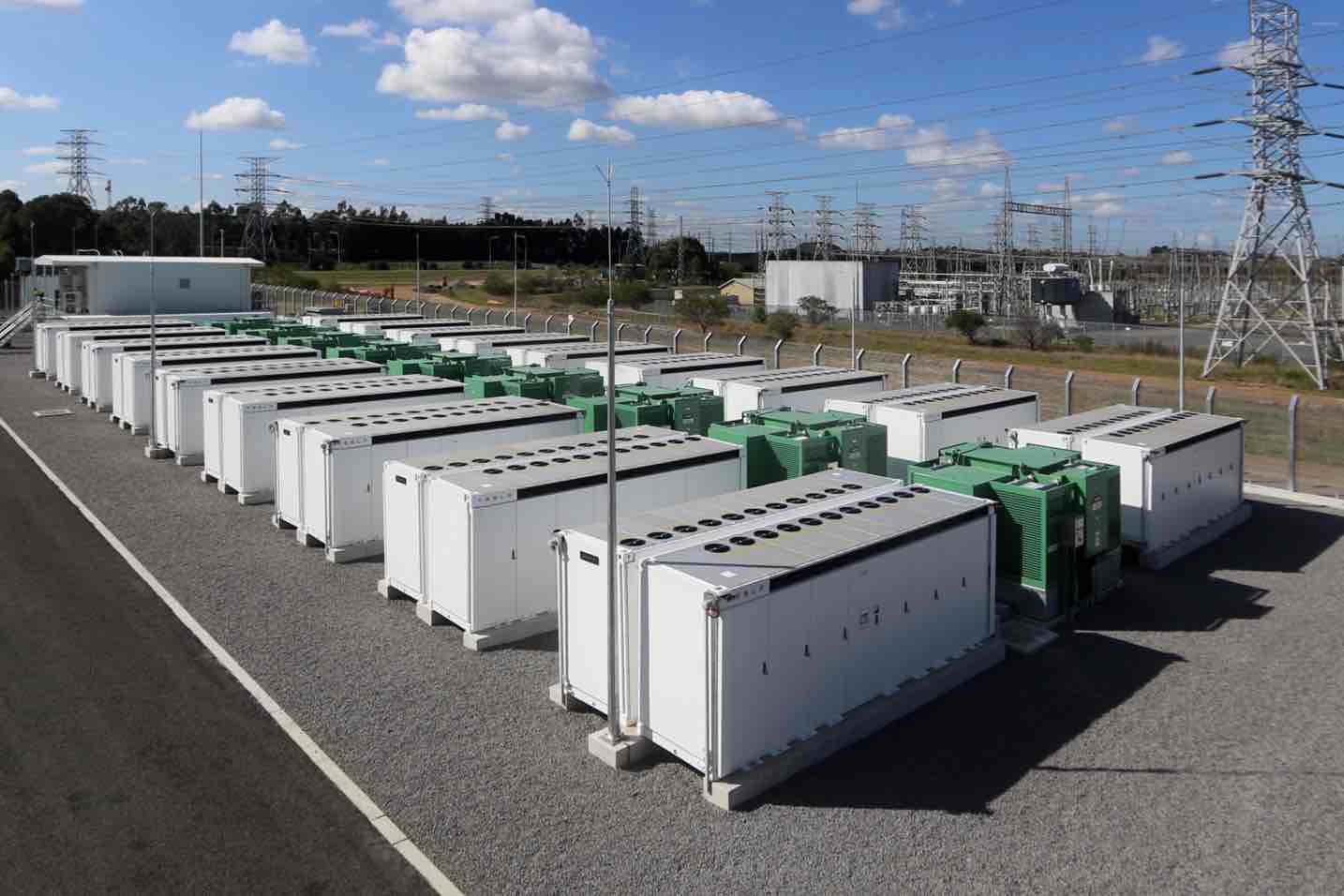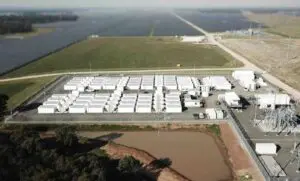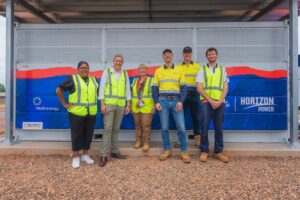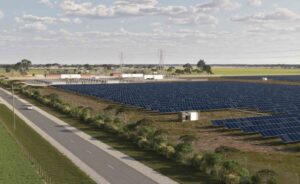The first big battery to be built in New South Wales is now registered and ready to begin the commissioning process, and testing its ability to deliver “synthetic inertia” and help reduce the grid’s need for ageing coal and gas plants.
The Wallgrove battery in western Sydney is being built by Transgrid subsidiary Lumea, using Tesla Megapack technology, and will be operated by Iberdrola as part of the portfolio it inherited from Infigen Energy.
At 50MW/75MWh, the Wallgrove battery is not the biggest battery in the grid, but it will be at the front end of technology innovation, with its testing of “synthetic inertia” and operating in “virtual machine mode”, just some of the big stack of functions that a battery can deploy.
Wallgrove will be the first of more than 10 big batteries to be built across NSW in the next few years as the state prepares for the retirement of its ageing coal fleet.
Other batteries have been proposed by AGL at Liddell, and through Maoneng at Sunraysia and Lismore, and by Origin at Eraring and by Neoen and others.
And while there is only about 600MW of battery storage operating in the grid now, a pipeline of more than 23GW has announced itself (with varying hours of storage).
See: Big Battery Storage Map of Australia
The opening of the Wallgrove battery follows the start of the commissioning process at the 100MW/150MWh Wandoan big battery, the first big battery in Queensland.
South Australia already has three operating big batteries, and Victoria also has three, with another – the 300MW/450MWh Victorian Big Battery – also in the commissioning process for what will be the biggest battery in the country.
The Wallgrove Grid Battery will be located at the Wallgrove substation in western Sydney and will provide fast frequency response and inertia services to the NSW transmission network, via Tesla’s synthetic inertia product known as “Virtual Machine Mode”.
These are essentially services traditionally delivered by “synchronous” generators such as coal and gas, but are now being provided by inverter based technologies, particularly those in battery storage.
“The Wallgrove Grid battery is a critical piece of the future energy infrastructure landscape that will deliver low-cost, reliable, renewable energy,” said Lumea CEO Richard Lowe.
“Technology is an incredible tool to help us with the complex challenges that the energy grid is facing, and that’s why this milestone is so exciting – we are live testing our solutions to build pathways to a smarter energy future, one where we harness Australia’s unmatched potential to be a clean energy superpower.”
Iberdrola already operates the Lake Bonney battery in South Australia.
“The battery will be dispatched as part of our fast-start firming portfolio, enabling us to provide commercial and industrial customers in New South Wales with reliable supplies of low cost green energy,” Iberdrola Australia’s managing director and CEO Ross Rolfe said.
The $61.9 million battery was due to receive up to $11.5 million in funding from the Australian Renewable Energy Agency, and another $10 million from the NSW government as part of its $75 million Emerging Energy Program.
Iberdrola will pay lease payments to Transgrid to operate the facility.
ARENA CEO Darren Miller has previously noted that batteries offer a solution to the challenge of maintaining grid security “at a small fraction of the cost of traditional technologies such as synchronous condensers”, such as those recently installed in South Australia.
“HoustonKemp has assessed the direct benefits to NSW electricity customers of this trial to be within a range of $93m to $135m,” he said.










